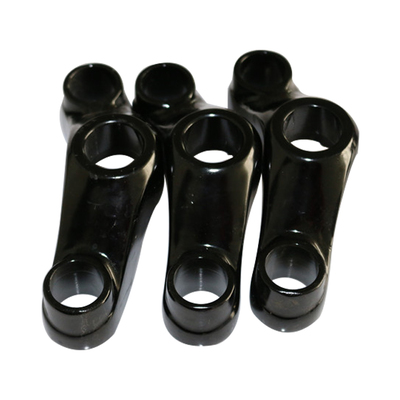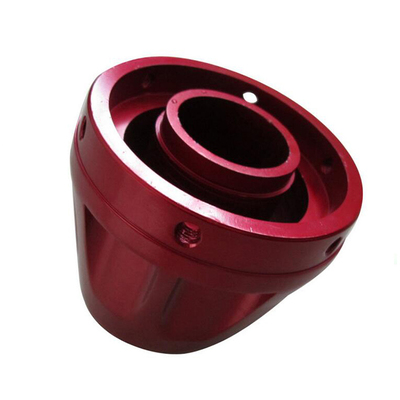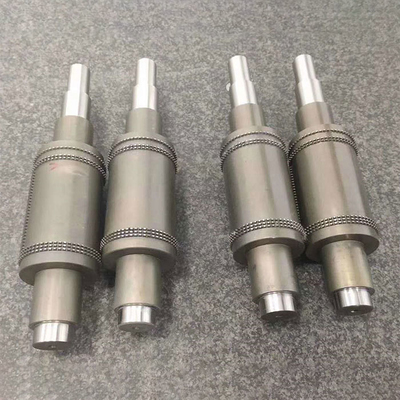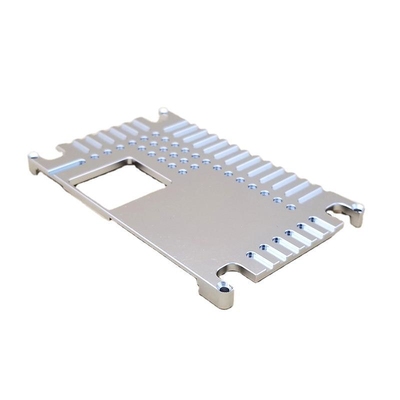Cleaning an Engine Block After Machining
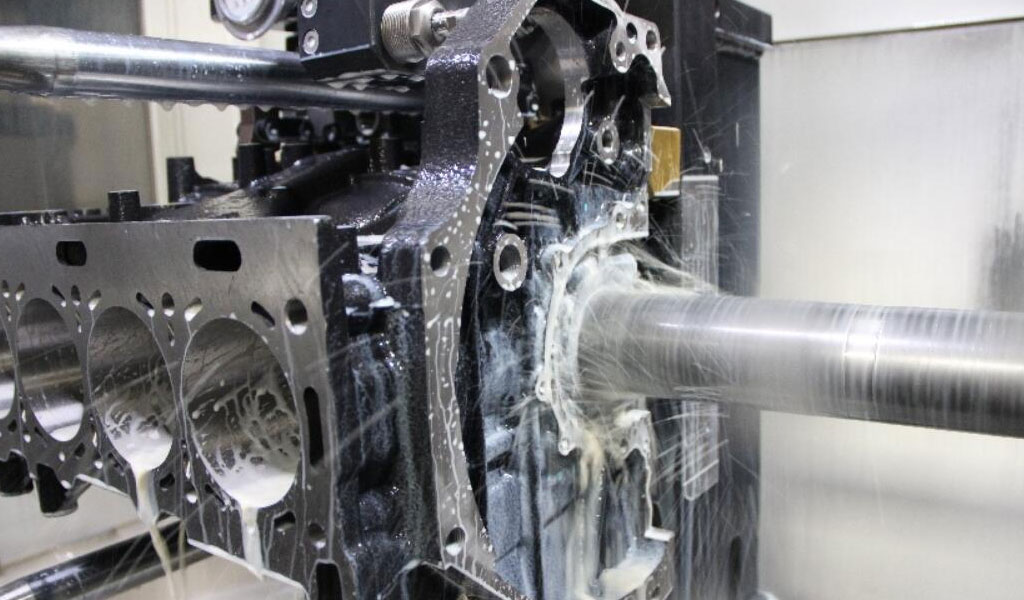
After machining an engine block, it is crucial to clean the block thoroughly to ensure optimal performance and longevity of the engine. Machining processes such as boring, honing, and grinding can leave behind metal shavings, oil, coolant, and other contaminants that, if not removed, can cause significant damage to the engine. Proper cleaning involves several steps and techniques to ensure that all residues are eliminated before the engine block is assembled.
Importance of Cleaning
Cleaning the engine block after machining is critical for several reasons:
- Preventing Contamination: Metal shavings, dust, and other debris left in the block can lead to premature wear and tear of engine components.
- Ensuring Proper Lubrication: Contaminants can obstruct oil passages, leading to inadequate lubrication of moving parts.
- Avoiding Overheating: Residual particles can block coolant passages, causing the engine to overheat.
- Improving Sealing Surfaces: Clean surfaces are necessary to ensure proper sealing, which is essential for maintaining compression and preventing leaks.
Common Contaminants After Machining
- Metal Shavings: Produced during boring, honing, and other machining processes.
- Coolant and Oil Residue: Used during machining to reduce friction and heat.
- Abrasive Particles: Result from grinding or sanding operations.
- Debris and Dust: Accumulate during the machining process and from the workshop environment.
Cleaning Methods and Techniques
1. Mechanical Cleaning
Mechanical cleaning involves using physical tools to remove debris from the engine block.
- Wire Brushes and Scrapers: Used to manually remove larger debris and metal shavings from the surfaces and cavities of the engine block.
- Compressed Air: Blowing compressed air through the oil and coolant passages helps to dislodge and remove finer particles.
- Brass Brushes: Used in situations where the surface of the engine block must not be scratched or damaged, brass brushes provide a softer but effective cleaning method.
2. Solvent Cleaning
Solvents are used to dissolve and remove oil, grease, and other contaminants that cannot be removed mechanically.
- Degreasers: Chemical degreasers are sprayed or applied to the engine block to break down oil and grease residues.
- Solvent Tanks: Immersing the engine block in a solvent tank allows for thorough cleaning of all surfaces, including hard-to-reach areas.
- Brake Cleaners: These fast-evaporating solvents are often used to remove oily residues and dry the engine block quickly.
3. Ultrasonic Cleaning
Ultrasonic cleaning uses high-frequency sound waves in a liquid to remove contaminants from the engine block.
- Ultrasonic Bath: The engine block is placed in a tank filled with a cleaning solution. Ultrasonic waves agitate the solution, creating cavitation bubbles that implode and clean the surface.
- Advantages: Ultrasonic cleaning is particularly effective at removing contaminants from complex geometries and internal passages that are difficult to clean mechanically.
4. Steam Cleaning
Steam cleaning uses high-pressure steam to remove grease, oil, and debris from the engine block.
- Steam Wands: Directing steam onto the engine block effectively cleans surfaces and flushes out contaminants from passages.
- Environmental Benefits: Steam cleaning is an environmentally friendly method as it uses water vapor and does not require harsh chemicals.
5. Chemical Cleaning
Chemical cleaning involves the use of acid or alkaline solutions to remove rust, scale, and other contaminants.
- Acid Baths: The engine block is submerged in an acid bath to dissolve rust and scale. This method is effective for older engine blocks that have significant corrosion.
- Alkaline Cleaners: Alkaline solutions are used to remove organic contaminants, such as oils and greases, without attacking the metal.
6. Pressure Washing
Pressure washing uses high-pressure water jets to remove contaminants from the engine block.
- Hot Water Pressure Washers: These are particularly effective at removing oil and grease, as the hot water helps to break down these substances.
- Nozzles and Attachments: Various nozzles can be used to focus the water jets on specific areas, ensuring thorough cleaning.
7. Electrostatic Cleaning
Electrostatic cleaning methods involve using electrically charged particles to attract and remove contaminants from the engine block.
- Electrostatic Precipitators: These devices use electric charges to collect and remove particles from the surface of the engine block.
Detailed Step-by-Step Cleaning Process
1. Initial Inspection
Before cleaning begins, the engine block should be inspected for any obvious debris or contaminants. This step helps identify areas that may require special attention during the cleaning process.
2. Mechanical Cleaning
- Step 1: Begin by using a wire brush or scraper to remove large metal shavings and debris from the surfaces of the engine block.
- Step 2: Use compressed air to blow out loose particles from oil passages, coolant passages, and other cavities.
- Step 3: Inspect the block for any remaining contaminants, repeating the mechanical cleaning process as necessary.
3. Solvent Cleaning
- Step 1: Apply a degreaser to the engine block, ensuring that all surfaces are thoroughly coated.
- Step 2: Allow the degreaser to sit for the manufacturer-recommended time to break down oil and grease.
- Step 3: Use a brush to scrub the surfaces, paying special attention to areas with heavy contamination.
- Step 4: Rinse the engine block with water or solvent to remove the degreaser and loosened contaminants.
4. Ultrasonic Cleaning
- Step 1: If ultrasonic cleaning equipment is available, submerge the engine block in the ultrasonic bath.
- Step 2: Set the equipment to the appropriate frequency and duration based on the size and material of the engine block.
- Step 3: Remove the engine block from the bath and rinse with clean water or solvent.
5. Steam Cleaning
- Step 1: Use a steam wand to direct steam onto the engine block, starting from the top and working your way down.
- Step 2: Focus the steam on areas with heavy grease or oil buildup.
- Step 3: Allow the engine block to dry completely before proceeding to the next step.
6. Chemical Cleaning
- Step 1: For rust removal, submerge the engine block in an acid bath according to the manufacturer's instructions.
- Step 2: Rinse the block thoroughly with water after removing it from the bath to neutralize the acid.
- Step 3: For oil and grease removal, use an alkaline cleaner as described in the solvent cleaning section.
7. Final Inspection and Drying
- Step 1: After completing the cleaning process, inspect the engine block for any remaining contaminants.
- Step 2: If necessary, repeat cleaning steps for any areas that still have debris or residues.
- Step 3: Dry the engine block thoroughly using compressed air or a clean, lint-free cloth.
Special Considerations for Different Engine Block Materials
Different materials used in engine blocks, such as cast iron, aluminum, and composites, require specific cleaning considerations to avoid damage during the cleaning process.
1. Cast Iron Engine Blocks
- Susceptibility to Rust: Cast iron blocks are prone to rusting, so it is essential to dry them thoroughly and apply a rust inhibitor after cleaning.
- Abrasive Cleaning Caution: Avoid using overly abrasive tools that can scratch the surface and affect the block's structural integrity.
2. Aluminum Engine Blocks
- Corrosion Concerns: Aluminum is susceptible to corrosion, particularly when exposed to acidic cleaning solutions. Ensure that any chemical cleaners used are compatible with aluminum.
- Gentle Cleaning: Aluminum is softer than cast iron, so use softer brushes and avoid aggressive mechanical cleaning methods.
3. Composite Engine Blocks
- Chemical Compatibility: Composite materials may react differently to various solvents and cleaners. Always check for chemical compatibility before applying any cleaning agents.
- Avoid Heat Exposure: Composite materials can be sensitive to high temperatures, so avoid steam cleaning or hot water pressure washing.
Conclusion
Properly cleaning an engine block after machining is a crucial step in the engine rebuilding process. By following the appropriate cleaning methods and techniques, machinists and engine builders can ensure that the engine block is free from contaminants, leading to better performance and longevity of the engine. Each cleaning method has its advantages and should be chosen based on the specific needs of the engine block material and the type of contaminants present.
Reprint Statement: If there are no special instructions, all articles on this site are original. Please indicate the source for reprinting:https://www.cncmachiningptj.com/,thanks!
 3, 4 and 5-axis precision CNC machining services for aluminum machining, beryllium, carbon steel, magnesium, titanium machining, Inconel, platinum, superalloy, acetal, polycarbonate, fiberglass, graphite and wood. Capable of machining parts up to 98 in. turning dia. and +/-0.001 in. straightness tolerance. Processes include milling, turning, drilling, boring, threading, tapping, forming, knurling, counterboring, countersinking, reaming and laser cutting. Secondary services such as assembly, centerless grinding, heat treating, plating and welding. Prototype and low to high volume production offered with maximum 50,000 units. Suitable for fluid power, pneumatics, hydraulics and valve applications. Serves the aerospace, aircraft, military, medical and defense industries.PTJ will strategize with you to provide the most cost-effective services to help you reach your target,Welcome to Contact us ( sales@pintejin.com ) directly for your new project.
3, 4 and 5-axis precision CNC machining services for aluminum machining, beryllium, carbon steel, magnesium, titanium machining, Inconel, platinum, superalloy, acetal, polycarbonate, fiberglass, graphite and wood. Capable of machining parts up to 98 in. turning dia. and +/-0.001 in. straightness tolerance. Processes include milling, turning, drilling, boring, threading, tapping, forming, knurling, counterboring, countersinking, reaming and laser cutting. Secondary services such as assembly, centerless grinding, heat treating, plating and welding. Prototype and low to high volume production offered with maximum 50,000 units. Suitable for fluid power, pneumatics, hydraulics and valve applications. Serves the aerospace, aircraft, military, medical and defense industries.PTJ will strategize with you to provide the most cost-effective services to help you reach your target,Welcome to Contact us ( sales@pintejin.com ) directly for your new project.

- 5 Axis Machining
- Cnc Milling
- Cnc Turning
- Machining Industries
- Machining Process
- Surface Treatment
- Metal Machining
- Plastic Machining
- Powder Metallurgy Mold
- Die Casting
- Parts Gallery
- Auto Metal Parts
- Machinery Parts
- LED Heatsink
- Building Parts
- Mobile Parts
- Medical Parts
- Electronic Parts
- Tailored Machining
- Bicycle Parts
- Aluminum Machining
- Titanium Machining
- Stainless Steel Machining
- Copper Machining
- Brass Machining
- Super Alloy Machining
- Peek Machining
- UHMW Machining
- Unilate Machining
- PA6 Machining
- PPS Machining
- Teflon Machining
- Inconel Machining
- Tool Steel Machining
- More Material

